
36 minute read
Tips from the experts to improve your game
Secrets to driving success
THERE ARE A LOT of frustrated golfers out there who just can’t figure out why they can’t get off the tee with any success or at least a little more consistency. I hear it all the time. “I hit my irons pretty well, I even hit my three wood well, but I just can’t hit my driver.” Golfer after golfer shows up for a lesson hoping I can teach them to hit their driver. But the truth is, you can’t learn to hit your driver.
Advertisement
There are two possible reasons why you’re not able to hit your driver. The first is that the club just doesn’t suit you. If you hit all of your other clubs fairly well but can’t hit your driver, it may be time to look for another one. Why would you change a swing that works for all of your other clubs? You may end up with a swing that fits your driver but doesn’t work as well with the rest of your set. If that is the problem, you’ll need to look for a club that better matches your set. I suggest that you try several different clubs and look for one that works with your existing swing. But while you’re at it, keep in mind the two major factors that make a driver tough to hit. The first is the length of the club. Try something a little shorter and see if that helps. The other factor is the amount of loft on the club. If you’re struggling to get the ball in the air, try a couple more degrees of loft. It just may make the club easier to hit. For most golfers I see, I recommend a 44-inch maximum length with a loft between 10 and 12 degrees.
The other, more likely, reason that you can’t hit your driver has to do with swing flaws and how the driver exaggerates them. You can compensate for many of your swing flaws with your shorter clubs because your arms and upper body are strong enough to square the clubface despite your mistakes. It’s not so easy with a 44 – 46 inch club. Centrifugal force will make it harder to square the club so you’ll see a lot of open clubfaces and slices. Also, little loft means more side spin. It’s hard to slice lofted clubs because they impart so much underspin on the ball, but with only 8-12 degrees of loft, side spin is exaggerated off the tee.
To get off the tee better you’ll have to either get a different driver or work on and improve your golf swing. Here are a few keys to help you get there.
Loft heads: Make sure your driver has enough loft on it. Loft is a good thing. You can always tee the ball up a little lower or move it back in your stance a touch if you want to hit a lower drive. Keep in mind most pros swing a driver with 120 mph club head speed and need 8 to 10 degrees of loft, so 10 to 14 degrees should not be out of the question for the average swinger.
Driver lengths: Your driver shouldn’t be too long. Long clubs may lead to a little more club head speed, but they’re more difficult to swing. Getting the center of the clubface on the ball every time gets harder as the club gets longer. Address position: At address, make sure you have a nice wide stance to give you a solid foundation. Keep the golf ball forward in your stance. I suggest a ball position off your lead heel. It’s also important to have your hands behind the ball and your back shoulder low and relaxed to help you launch the ball forward.
Top of backswing: Make sure you control the length of your backswing with a driver. Many golfers overswing, which actually prevents necessary forward acceleration. You must be in a position to be able to deliver the club to the ball at the top of your backswing. A little shorter is better than a little long.
You can learn a lot by watching a baseball player standing at the plate. He’s poised and ready to move forward, the bat is never wrapped too far around behind him.
Batter stepping towards pitcher): Like a baseball batter, if you lead your forward motion with your legs and hips, the bat (or club) will shallow into the hitting zone.
Impact position: Forward acceleration based on a strong top of backswing position results in a powerful impact position. Weight on lead leg, hips cleared and arms extending past you.
Kevin Haime Kevin Haime Golf School www.kevinhaime.com
Breaking putts
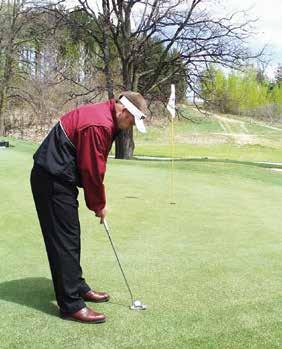
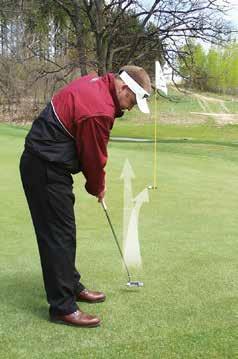
HOW MANYTIMES have you missed that breaking putt because you didn’t allow for the correct amount of break? To work on getting a feel for breaking putts try this technique on the practice green. Crouch down behind your ball in a straight line, keeping the ball and the hole in sight. Try and estimate the amount of green you need between the hole and your target. Your new target is now a spot to the left or right of the hole. Place a tee in the ground at your new target. Hit your putt at that tee, and watch the ball break. If the ball ends up on the low side of the hole you need to move your tee to allow for more break, and opposite if the ball ends up on the high side of the hole. The speed of the greens determines the amount of green you should allow for the proper break. Take twenty minutes before each game and spend that time on the practice green of the course you are playing to learn the proper speed in order to deter- mine the correct amount of break you should be playing.
Dwight Reinhart Head Professional, Renfrew Golf Club
Get better contact on your chip shots
IN ORDER TO ensure a crisper, more consistent, chip shot try these changes: £ Open your stance to the target line with your feet closer together than a regular shot. £ Play the ball back in your stance just inside your back foot (right foot for right handers) £ Place your hands ahead of the ball position with your weight on your left foot (for right handed golfer) grip- ping down on the shaft. £ Keep your wrists firm during the stroke (do not allow the right hand to pass the left) £ Keep the body quiet; use more arm and shoulder motion. This combination of factors will ensure a steeper swing thereby getting the club out of the grass on the backswing and producing cleaner contact on the follow-through.
The final piece of the puzzle is to choose a club based on the location of the pin. If the pin is on the far side of the green select a club with less loft such as a six or seven iron to allow the ball to run.
A pin position close to you would require a lofted club like a nine or pitching wedge that will reduce the roll of the ball with a soft backspin at contact.
Try this straightforward method to improve your consistency and lower your scores.
Gary Harrison C.P.G.A. Head Teaching Professional, Stonebridge G&CC
Executing the low pitch
THE LOW PITCH shot. Not the easiest shot in the game, but very achievable with some practice (isn’t everything?).
When do we try this little beauty?
Try the low pitch when you have an unobstructed view of the green, no trouble between the ball and the flag, and a fair amount of green to work with. You may be tempted to make a really long putting stroke on this one, but the ball may get caught up in the grass between you and the green. Our objective is to have the ball land on the green, take one or two bounces, and come to a screeching halt (fun to watch…everybody goes ooooooooh!)

Why do we use this instead of a higher softer shot?
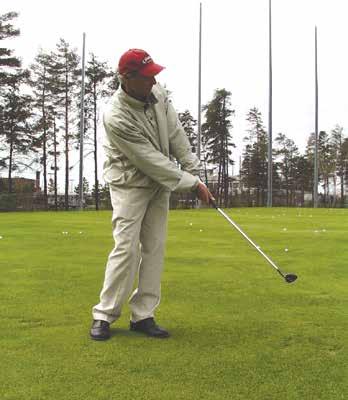
I believe there is less chance for error, especially if the ball is sitting on a tight lie in the fairway (might use the higher shot if we’re in the higher grass). We can control a lower trajectory with more confidence!
How do we execute this shot?
Setup: Because we want to make a descending blow to put spin on the ball, the weight goes more on the forward leg and the ball is placed a little behind the centre of the stance. With this setup, the club will attack at a steeper angle, pinching the ball between the clubface and the ground. You must take a little turf with this one (try not to “scoop” the ball into the air)
Swing: As with the pitch shot, we employ the “HI - HO” technique. “HI” is the slight hinging of the wrists on the way back and “HO” is the holding of that hinge through the ball (do not release the clubhead). Keep the lower body steady on the way back and then get the weight moving forward through the ball by kicking the back knee toward the target.
To keep the ball low, we must finish low! Experiment with different clubs to see different results. It’s up to you now! Also, the type of ball we use will determine whether or not we can make it stop. A distance ball will, very simply, not spin as much as one with a softer cover.

Good luck, have a lot of fun, and I hope your game constantly improves!
Dave Kalil C.P.G.A. Teaching Professional Ottawa Hunt Club
STAY & PLAY
• Luxury Villas — Excellent Rates! • Tailored Golf Packages from only $78 pp • Jacuzzi / Fireplace / Lakeside Setting • Open year round (877) 224-4653
Designed by Man . . . Defined by Nature

TWO GREAT GOLF COURSES
• Excellent Value for Superior Golf! • Each course has 27 holes. . . A Must Play! • Calabogie Highlands – (613) 752-2171 • Pakenham Highlands – (613) 624-5550
www.CalabogieHighlandsGolf.com

Looking for new clubs?

Get ones that are tailor-made for you! CANADA’S LARGEST SELECTION OF GOLF COMPONENTS
FULLY STOCKED RETAIL STORE GOLF CLUB REPAIR I BRAND NAME CLOSEOUTS
DYNAMIC FITTING I ALTERATION SERVICES The GolfWorks 613-727-1721 855 Industrial Ave. POWERBILT GRAND SLAM DRIVER, 3, 5 WOOD SET $39. 95 REGULAR $149.00 (LH ONLY) $79. 95 REGULAR $379.00 IRONS ON SALE www.golfworks.com HALF PRICE
ON ALL GLOVES (RH/LH)
1/2 price Regripping Sale Choose from over 300 styles of grips!
A correct spine angle for better contact
ONE OF THE MOST misused phrases you hear in the game of golf is people “not keeping their head down”, especially when they are having problems getting solid contact with the golf ball – either “topping it” or hitting it “fat”.
When people try to “keep their head down” they tend to bury their chin in their chest and become even more likely to miss-hit the ball.
The real root of this problem is the lack of an established spine angle and the maintenance of it throughout the swing.
To create the proper spine angle in your address position, start with your legs locked together with the club extended in front of you. While maintaining a straight back, move the club to the ground by tilting your pelvis only. Then establish your normal set-up position. This will create an angle with your body in a well-balanced position where you will be able to turn properly around your spine as you make your swing motion.
During the swing itself you want to maintain this same spine angle throughout. Since your arms don’t grow during your swing, you want to maintain the same arc as you establish at address in order to hit the ball consistently each time.
When practicing, even with a half wedge swing, try and make sure that your lead shoulder does not get farther or closer to the ball. When you swing through, try and turn so that the rear shoulder turns under and replaces the position of the lead shoulder. If you do this you will maintain the same spine angle you established at address and will likely make consistent contact with the ball.
Mike Compeau
a natural setting a pleasant challenge

Enjoy our scenic 27 holes of golf • 18 Hole Course – Par 72 – Includes our newest nine holes (opened Aug 2004). 1956 – 8th Line Road Metcalfe, ON Challenging for golfers of all abilities • 9 Hole Course – Par 36 – Well suited for new golfers, juniors, seniors & family outings [15 minutes from Bank & Hunt Club or 20 minutes from Nicholas & the Queensway) info@metcalfegolf.com • Be sure to visit Hickories Restaurant for www.metcalfegolf.com fantastic cuisine and great service (613) 821-2701
• Just like a real golf course • Lazer-measured yardage for each player • 25 well-groomed grass hitting stations
PLUS! • A real chipping green, a putting green, and a sand bunker to practise your short game!


GOING THE FULL DISTANCE
Hike from Ottawa to Kingston with the Rideau Trail Association
By Nigel Brereton
QUICK — HOW MANY ways are there to get from Ottawa to Kingston?
Driving, boating on the Rideau waterway, and cycling come to mind, right? And a few high-fliers might take to the air in their ultra-lights.
Here’s another option this year — the Rideau Trail Association is leading a series of hikes that will leave Ottawa in April and get you to Kingston by October. Not to worry
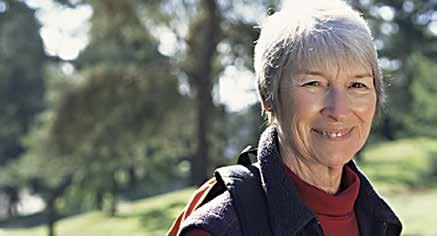
— this hike comes in segments. No landspeed records are going to be shattered, but the magic word here is “series.”
The Rideau Trail is a back-country hiking route meandering some 300 kilometres between Ottawa and Kingston that passes through interesting countryside that includes towns and villages along the way.
In some places, the trail comes close to the Rideau waterway and passes by some of the lock stations. It takes you through Murphy’s Point and Frontenac provincial parks, as well as Foley Mountain conservation area near Westport. The trail does not pretend to be a rigorous challenge and can easily be tackled by beginners and hikers with physical limitations.
The series of hikes will start in Ottawa on April 30 and continue each weekend. The average length of each hike is 14 kilometres and no hike is longer than 18 kilometres. Car or bus shuttles help to avoid retracing those portions of the route that you’ve already covered. Each hike is led by a knowledgeable leader and hikers can drop in and out as availability and inclination dictates. Or, just go once and enjoy the scenery.
Hikers who go the full distance will receive a badge and a certificate. Hikers who aren’t available to finish the whole trail this year can still earn an “endto-end” badge by completing missing segments either on other Rideau Trail Association outings or on privately organized hikes.
– To find out more about the Rideau Trail Association, please visit them at www.rideautrail.org
URBAN SPICE – by Julie St. Jean In like a lion, but lamb tastes like a delicacy
EACH YEAR, THE SUN melts away our roaring winters to uncover all that is new.
With spring and summer on our doorsteps, we can take great pleasure in eating well. For a perfect marriage of the fresh seasonal ingredients of spring and the welcome lifestyle of outdoor cooking, check out this Moroccan spiced grill for exciting new ideas.
The irreplaceable taste of fresh herbs complement light grains. They also balance the heat of Middle East spices in both the lamb burgers and the spicy chickpea salad.
Lamb burgers
Lamb is a tender delicacy. Ground lamb from the shoulder is the most flavourful cut, and it stands up well to the heavy seasonings that make it the perfect vehicle for our Moroccan spiced grill. 2 lb (1 kg) ground lamb 1 small onion, diced fine 2 tbsp (30 mL) garlic, minced 2 tsp (10 mL) cumin 1½ tsp (7.5 mL) cayenne 2 tsp (10 mL) salt 2 tbsp (30 mL) olive oil ½ cup (125 mL) chopped fresh mint ½ cup (125 mL) ground pistachio or almonds
Combine all ingredients in a large bowl. Knead well. Divide mixture into six for burgers, 12 for large kebobs or 24 for small kebobs.
Barbeque burgers on a preheated grill over medium heat for approximately four minutes per side for a mediumcooked burger (140-150 degrees F). Barbeque large kebobs for approximately two minutes per side, and one minute for per side for the small kebobs. For a unique burger, serve with plain yogurt, lettuce, cucumber relish and tomato in half of a whole wheat pita pocket.
Cucumber mint relish
A refreshingly light condiment that takes only minutes to prepare, but tastes like you spent hours in the kitchen. Add this to yogurt for a homemade tzatziki. 1 English cucumber, seeded and diced fine 2 tbsp vegetable oil 1 shallot, diced fine 1 clove of garlic, minced ¼ cup white wine vinegar or rice vinegar ¼ cup mint pinch of each salt and pepper
Heat oil in a skillet over medium heat. Cook shallots and garlic briefly for one minute. Add vinegar, salt, pepper and fresh mint. Pour over diced cucumber. Makes 4-6 servings.
Taboulleh
Increase the amount of fresh lemon juice to give this low carbohydrate salad a welcome burst of flavour or try adding diced tomato, cucumber and red onion or toasted nuts for a heartier salad. Salad: 1 cup bulgur 1 cup water 1 tsp olive oil salt Dressing: 1 bunch parsley, chopped fine 2 cloves garlic, minced 100 mL fresh lemon juice 100 mL olive oil 1 tsp salt
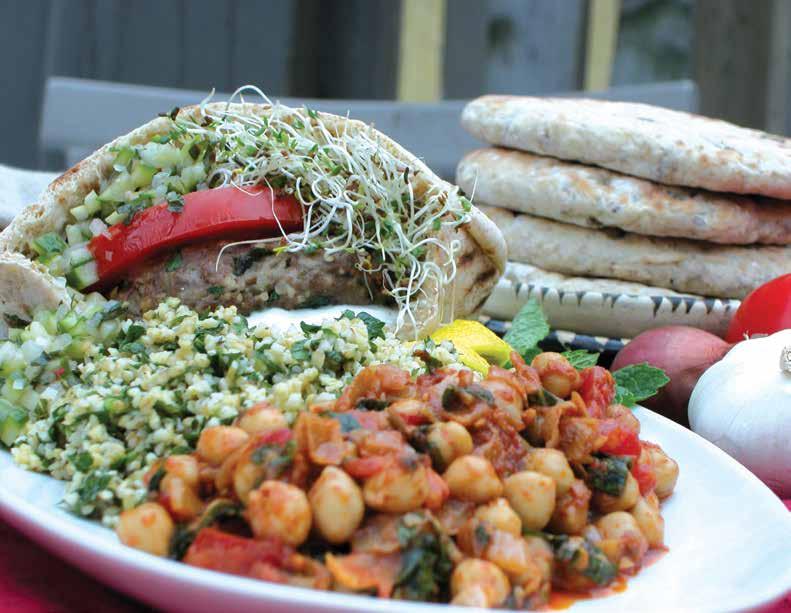
In a large bowl, stir bulgur with olive oil and salt. Pour boiling water over bulgur and let sit for 10-15 minutes. Fluff with a fork and continue to let it sit until the water is absorbed. Add parsley. Whisk dressing ingredients and pour over bulgur. Makes approximately four cups or 6-8 servings.
Spicy chickpea salad On a bed of wilted spinach with a side of basmati rice, this makes an excellent vegetarian meal.
¼ cup (60 mL) olive oil 1 large onion, diced 1 tbsp (15 mL) garlic, minced 1 tsp (5 mL) paprika 1 tsp (5 mL) salt ½ tsp (2.5 mL) cayenne 1 tbsp (15 mL) tomato paste 2 large ripe tomatoes, diced ½ cup (125 mL) fresh mint, chopped 1 can (19 oz) chickpeas, drained and rinsed
Heat olive oil in a heavy bottomed skillet over medium. Cook onions until translucent. Add spices, garlic and tomato paste. Cook for 2-3 minutes. Add diced tomatoes, chickpeas and fresh mint. Remove from heat. Serve warm as a side dish or cold as a salad. Makes 4-6 servings.
Matching wine with spicy Indian food
ARE YOU HESITANT about choosing a wine to accompany spicy Indian food?
Many people avoid choosing wine in an Indian restaurant, even when there are choices that work well with spicy food.
Some wines can be an excellent match to Indian food, but there are a few things that hold people back, including a lack of knowledge, bad wine lists and the “beer me” habit.
Relatively little has been written about matching wine to richly spiced food, and guidelines seem few and far between. You might think that the wine list at an Indian restaurant is the place to start. But, being on the wine list doesn’t guarantee a wine will complement your meal.
Faced with this uncertainty, many people take the easy way out and choose beer. There’s nothing wrong with cold and refreshing beer — it’s rarely a bad choice with Indian food. And wine isn’t a better choice, just a different choice that can add some variety to an evening out.
Indian food is all about variety, with complex spice blends instead of one or two spices dominating a dish. A curry, Tikka Masala or Biryani dish could have 20 or 30 different spices in the blend. A little bit of the spice blend can add many subtle flavours, and a lot will overpower the dish.
There is a principle that suggests complex wines match simple foods and simple wines match complex foods. If you prepare a roast leg of lamb in a French style, with rosemary sprigs, and green beans almandine on the side, then the classic match would be a firm, complex Bordeaux. But prepare the lamb in a curry with a spice blend that includes chillies, cumin, cinnamon, cloves, cardamom and more, and the Bordeaux could be overwhelmed.
Wines that work better with richly spiced food have a few common characteristics. They are “fruit forward,” lower in acid, have a touch of sweetness, and low tannins.
Fruit forward is just another way of saying that the wine is dominated by its fruitiness. Fruitiness suits the rich spice mix of Indian food, which tends to be lower in acid than other cuisines, so use wines that are lower in acid. And with a spicy hot dish, a touch of sweetness can be very soothing.
Tannins in the wine amplify the burning or hot sensation in a dish with chillies. If you want to cool down the heat of the food, choose a white wine with no tannins and serve it cold. If people want to feel more heat, serve a red wine with medium tannins at room temperature.
The classic match to Indian food comes from the grape varietal Gewurztraminer. This is often a fullbodied, fruity wine with exotic lychee and floral character. Try Pierre Sparr for an “old world” example from the Alsace in France, or try Strewn for a “new world” example from the Niagara region in Ontario.
A number of other grape varietals also provide an excellent match to Indian food: • Chardonnay Musquee – Not to be confused with Chardonnay, this is a totally different grape. It makes a white wine with exotic fruit aromas, and the right balance of acid and sweetness to work with a wide range of Indian foods. An excellent example comes from the Cave Spring Winery in the Niagara region. • Gamay – This is a red wine that is light in colour but rich in flavour, with low tannins. The standard grape in Beaujolais, Louis Jadot BeaujolaisVillages, is a good example of
Gamay in a French style. • A Shiraz blend – Want to turn up the heat? Look for a blend that is a bit young and let the tannins do their work. There are plenty of Aussie products to choose from here, including d’Arry’s Original Shiraz-Grenache (d’Arenberg winery), Palandri, or Peter Lehman Clancy’s Red or
Barossa Shiraz. – Joe Hatz is a sommelier and wine educator who may be reached at joehatz@rogers. com for comments or suggestions for future articles.
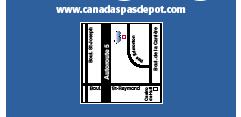

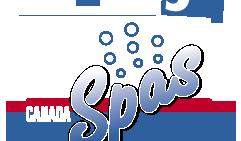














Castor and Pollux — Twin stars of Gemini
WHAT A DIFFERENCE a name makes.
According to a Blackfoot Indian myth, the Gemini twins were named Rock and Beaver after the spirits that raised them from infancy. The brothers possessed very strong medicine, magic so powerful they were able to transform themselves into stars in the sky.
The Romans knew them as Romulus and Remus, the twin sons of the god Mars. According to mythology, they were abandoned as infants on the banks of the Tiber River, but survived by suckling the milk of a she-wolf until a shepherd found them. The brothers later built a town on that spot by the Tiber, but fought over who should rule. Romulus killed his brother, named the town after himself, and so became the first king of Rome.
It is the ancient Greeks, however, who appear to hold the naming rights over the twins — at least as far as astronomers are concerned. Star atlases identify the two brightest stars of Gemini by their Greek names, Castor and Pollux. In classical mythology the twins were hatched from an egg after their mother Leda, who was also the mother of Helen of Troy, was seduced by the god Zeus disguised as a swan.
For all their shared mythological gene pool, the stars themselves couldn’t be more different. Castor is a hot, white star about twice the diameter of our Sun. Pollux is a cooler yellow star more than ten Sun diameters in size. Curiously, although Castor is identified as Gemini’s “alpha” star, it is not as bright as Pollux. Astronomers believe one or the other of them must have changed luminosity significantly in the last few hundred years.
In a small telescope, Castor reveals itself as two stars orbiting a common centre of gravity, but there is more here than meets the eye. The entire Castorian system is actually made up of six interacting stars, including two dim red dwarfs that orbit each other with dizzying velocity in less than 20 hours. Talk about “need for speed.”
Sadly, Pollux is much less interesting. It is nearer to us than Castor (34 light-years compared to 52 l.y.), but it is a solitary star, whistling its own way through space at 30 kilometres per second. Probably the best thing going for Pollux is its position in the sky as the head of Castor’s twin.
Gemini is one of those constellations that actually looks like what it is supposed to be — in this case, a couple of stick figures holding hands. Locating the twins is easy, as their feet rest on the shoulders of Orion, the showpiece constellation of winter. The twins appear to be lying on their side to the left of the top of Orion. Don’t be confused by Saturn, which is masquerading as a bright “star” below Castor and Pollux this spring. Seventy-five years ago astronomers rushed to point their telescopes at this very same part of the sky after another planet — Pluto — was discovered near the star delta (δ) Geminorum. It’s hard to imagine, but Pluto hasn’t even completed one-third of its 249-year orbit around the Sun since it was discovered.
Gemini has other gems hidden within its fold, such as the beautiful open star cluster Messier 35 which is visible with binoculars. Perhaps the most fascinating telescope object in Gemini is the Eskimo “planetary” Nebula, an enormous expanding shell of gas blown off a dying star. At high magnification, the Eskimo looks like a face inside a fur-trimmed parka hood. In another five billion years or so, the Sun will produce its own planetary nebula when it runs out of hydrogen fuel and collapses into a white dwarf. Long before that happens, how
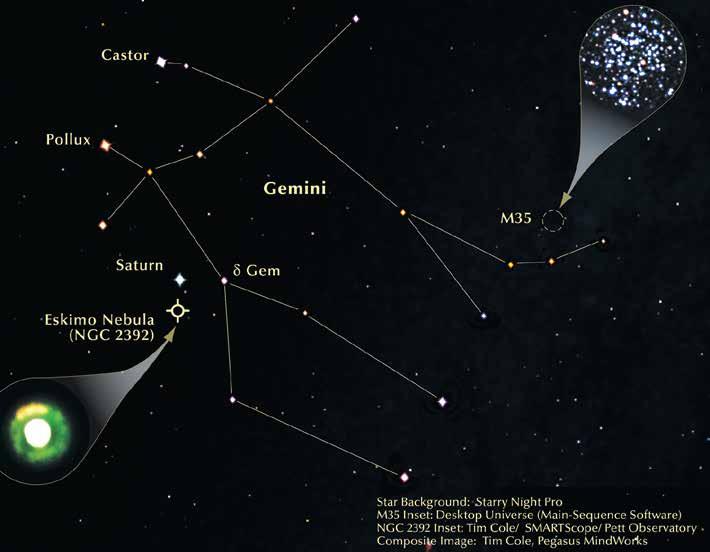
ever, we humans had better find another place to call home.
Astrologers say that people born between May 21 and June 20 are intellectual and restless. But take it from me; you don’t have to be a Gemini to find plenty to stir your imagination among the starry twins of spring.
Clear skies and happy observing! – Brian McCullough is an astronomy educator in Ottawa. For information about programs, contact him at brian.brightstar@sympatico.ca
NEW ONE DAY BIKE TOUR Available
Ottawa–Kemptville August 6 & 7, 2005 16th Annual
CALL 613-728-1583 to REGISTER or on-line at www.MSBikeTours.com
RONA MS BIKE TOUR – 16th Annual August 6 & 7, 2005 Ottawa to Kemptville
RONA MS Bike Tours provide Ottawans with the opportunity for a leisurely one- or two-day ride through scenic and often spectacular parts of the region. Nearly twenty RONA MS Bike Tours will take place across Canada to raise funds for research and services for people with MS.
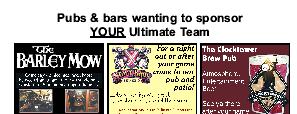

TO REGISTER: 613-728-1583 www.MSBikeTours.com
COGNOS QUEST FOR A CURE ADVENTURE RACE June 24-26, 2005 Madawaska Highlands / Ottawa Region
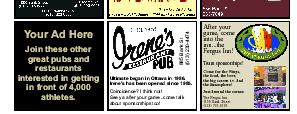
LONG COURSE (Friday June 24th Start) This is our classic 48hr, 290km event which this year includes white water canoeing and a breathtaking rappel down a spectacular 200ft granite cliff. SHORT COURSE (Saturday June 25th Start) Teams looking to experience the challenges of overnight racing will find our 24hr, 130km short course a great choice. TO REGISTER: 613-290-9481 www.QuestForACure.com
BELL CITY CHASE July 16, 2005 Urban Ottawa
Taking 4-6 hours to complete, each Bell City Chase event tests a team’s resourcefulness, endurance, mental toughness, and the ability to make decisions on the fly. To conquer this urban event, 2-person teams will utilize current technology, implement orienteering skills and work effectively as a unit. The team to complete the required ChasePoints and cross the finish line first, WINS. TO REGISTER: 905-282-0770 ext. 225 Email: Cityguru@citychase.com or www.BellCityChase.com
Level Six Capital Cup May 7-8, 2005 Champlain Bridge, Ottawa Come out for a FREE show. Meet and/or compete with Ottawa region paddlers and some of the best paddlers in the World. Major retailers from the region will be there so you can try the new models of kayaks and canoes. Sponsors: Boatwerks,Wilderness Tours and Ottawa Kayak School, Trailhead, MEC, Camp de Base, MKC, Liquid Skills, Esquif Canoes, Ottawa Outdoors Magazine.
Simon Rivers & Paddlefit Summer Kayak Series Various Summer Dates Kayak training classes are available for groups or by private lessons with 90-min sessions regularly scheduled
For more info conact Tyler at 274-0144 or visit the Web site at: www.levelsix.ca
If we can help schedule a class which better suits your needs please feel free to contact us. Also coming this summer the Trailhead Kayak races series.
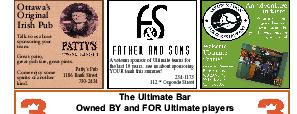
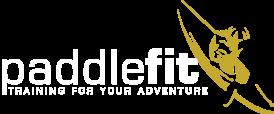

To book for Kayak Training call: 613-715-2243 or visit www.paddlefit.com
Celebrate the Wild Nahanni – Slideshow Wednesday, May 11, 2005 - 6:00pm National Library and Archives, Ottawa
Join the Canadian Parks and Wilderness Society (CPAWS) with special guests Becky Mason and Justin Trudeau.
PUBS & BARS looking to sponsor YOUR sport team!

ATTENTION TEAMS! If you play Ultimate, Volleyball or other team sports, we can sponsor you. • right across from Mooney’s Bay, in the Riverside Mall – off Ridgewood • patio, great food and beer • plenty of easy, free parking Call Don Hill at 260-7550

Specialist in wealth & estate planning
Richard L. Holdham , CFP, CLU, CH.F.C., RHU
A division of London Life Insurance Company
Suite 300, 1223 Michael Street Office - 613-748-3455, ext. 267 Residence - 613-825-8987 Email - rick.holdham@freedom55financial.com
Bill Rhodenizer
Registered Physiotherapist 1101 Bank St. (near Sunnyside) 564-9191 • private physiotherapy clinic • a totally unique ‘hands-on’ treatment that works • 25 years experiences • to aid those suffering from muscle, bone and connective tissue disorders


The Ticket Guy Discounted tickets to the Renegades, Ottawa Senators, and many other events! Tickets cheaper than anywhere else!

• Save on Landsdowne games and a variety of other Corel Centre Events, such as
Stars on Ice, Disney on Ice etc. • The Ticket Guy can help your cause by setting up a team or individual fundraising opportunity. The Ticket Guy is a proud supporter of various community teams and organizations.
craig vroom To book your tickets please contact Craig at: 613-851-0526 Tickets@TheTicketGuy.ca

Shaunna Taylor Sport Psychology Consultant Ottawa High Performance Centre
104 -100 Craig Henry Drive Ottawa ON K2G 5W3 (613) 274-3333 shaunnataylor@sympatico.ca



SEA KAYAKING LESSONS


Rick Wise, Director
Horizons Adventures T. 705-866-2345 877-404-4142 Info@HorizonsAdventures.ca www.HorizonsAdventures.ca

Ecotourism and Adventure Tourism Management Program Join 11 years of competitive graduates. Want to talk to one?
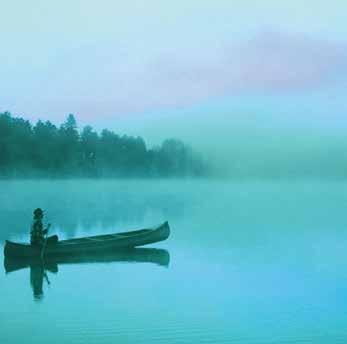
SIR SANDFORD FLEMING COLLEGE
HALIBURTON CAMPUS Contact: Sheila Rowell 705-457-1680 srowell@flemingc.on.ca www.flemingc.on.ca/ecotourism

LEARN TO KAYAK on your weeknights or weekends right HERE in the city LEARN TO KAYAK on your weeknights or weekends right HERE in the city
• locally, at the Champlain Bridge • locally, at the Champlain Bridge • kids lessons or adults • flatwater or whitewater • kids lessons or adults • flatwater or whitewater • private or group lessons
www.DownToEarthKayak.com
• private or group lessons
www.DownToEarthKayak.com (819) 827-5905 or (613) 298-9254 (819) 827-5905 or (613) 298-9254

GREENPAGES GREEN PAGES Reference Guide
Your contact listing for all your outdoor adventure needs
EQUIPMENT, GEAR OR SPORT
• Trailhead – 722-4229 • Mountain Equipment Coop – 729-2700 • Bushtukah – 792-1170 • Langford Sports – 725-5259 • Jenda Paddlesports – 826-0922 • Tommy & Lefebvre – 236-9731 • Expedition Shoppe – 722-0166 • Kunstadt Sports – 831-2059 • Glebetrotters Footwear – 231-6331 • Cycos – 567-8180
CANOE & KAYAK LESSONS
• Liquid Skills Kayaking – 582-3340 • Down to Earth Kayaking – 827-5905 • Wilderness Tours – 800-267-9166 • Equinox Adventures – 800-785-8855 • Riverrun Whitewater Resort – 800-267-8504 • Ottawa New Edinburgh Club – 746-8540 (Rowing) • Horizons Sea Kayaking Lessons – 877-404-4142
OUTDOOR ACCESSORIES
• World of Maps – 724-6776 • True North Satellite Phones – 796-3874 • FenDock – Cottage docks – 722-6581 • AquaPac – 800-331-5815 (Waterproof camera accessories)
ADVENTURE /URBAN RACING & TRAINING
• Equinox Adventures – 800-785-8855 • Bell City Chase – 905-282-0770 ext. 225 • Outlast – 728-0826 • Corpsynergy – 222-7943 • Quest for a Cure – 290-9481 • Rick Hellard – www.Zone3sports.com (Triathlon)
WHITEWATER RAFTING
• Wilderness Tours Resort – 800-267-9166 • Riverrun Whitewater Resort – 800-267-8504 • Owl Rafting – 800-461-7238 • Madawaska Canu Centre – 613-594-5268
ADVENTURE TRAVEL / GETAWAYS
• Wakefield Mill Inn –888-567-1838 • Calabogie Peaks Resort – 800-669-4861 • Adventure Lodge – 613-637-5507 • Ottawa Outing Club – 729-3034 • Ecotourism Mngmt Program – 705-457-1680
HEALTH & FITNESS
• Holistic Clinic – 521-5355 • RA Centre – 733-5100 • CycleFit – 231-6985 • Rama Lotus Yoga Centre – 234-7974 • Fascial North Treatment Centre – 564-9191 • SiriusMed Wildnerness Safety – 877-982-0066
OUTDOOR VEHICLES
• Tony Graham Lexus Toyota – 225-1212
c c
Capital Ideas Communications • writing and editing services • marketing communications • public relations
Brant Scott c) 613-447-7726 brant.scott@sympatico.ca www.CapitalIdeasCommunications.ca
That’s an admirable credo espoused by many new breeders, but it’s trickier than winning a triathlon while carrying a full beer keg. Having kids will alter your lifestyle. Some things are probably best put on hold for a while, like standing on the canoe gunwales and peeing into a headwind. Sure, you can do it, but it’s no fun for anyone else.
Another thing that belongs on the back burner is wilderness camping with really young children. They should at least be able to swim and wipe that icky stuff off their noses by themselves. During those early years when they’re too young to take into the outback safely, there’s an alternative to just staying home.
You can go car camping.
Admittedly, car camping is an insipid, poor cousin to wilderness camping, but it does come with one significant luxury — you have a car. In our case a few years back, an old van doubled as our pantry, change room, den, library and rec room. (Full disclosure: it was a pub one evening, too, while I sipped a quiet jar and caught up on the sports scores on the radio. Did you know Gretzky was traded?!)
With our new brood comes a new tent. It takes the neighbours on three adjoining campsites to help pitch it, but once it’s up, there’s enough room inside to play handball. And to think I spent all those years lying in my tiny tent with that drippy, sagging nylon tickling my moustache all night. Eureka — what a joy to own a tent that’s bigger than my first apartment. (Note to self: capitalize on this unintentional product placement later on.)
Before we pack the van, I take the manufacturer’s advice and pitch the tent in my backyard to soak it down with the garden hose. I would be very glad I did. The guy next door, however, thinks I’m off my rocker. Scratching his head, he asks why I’m flooding the rink in the middle of summer with a tent in the middle.
Our children were three and four years old when we set up camp under the towering pines at Lake of Two Rivers campground in Algonquin Park. The wee chitlins have a great time swimming and playing tag and watching me blow ashes into our spaghetti as I try to coax flame from green firewood. Near the end of the day, however, the crickets go way too quiet as black clouds drag their knuckles through the treetops. The wind comes up hard and my right knee starts to throb from that line-drive to first base years before. We’re in for it.
As we put away supper, the night sky is a swirling, purple bruise. We take refuge in our new tent, hoping the storm will track somewhere southward. Sometime around midnight, however, the heavens overturn and lightning sizzles overhead. The roar of a thousand bass woofers shakes the ground under our sleeping bags. Our son is becoming agitated, as his mother does when she forgets her thunderstorm poker face. I have always loved watching a
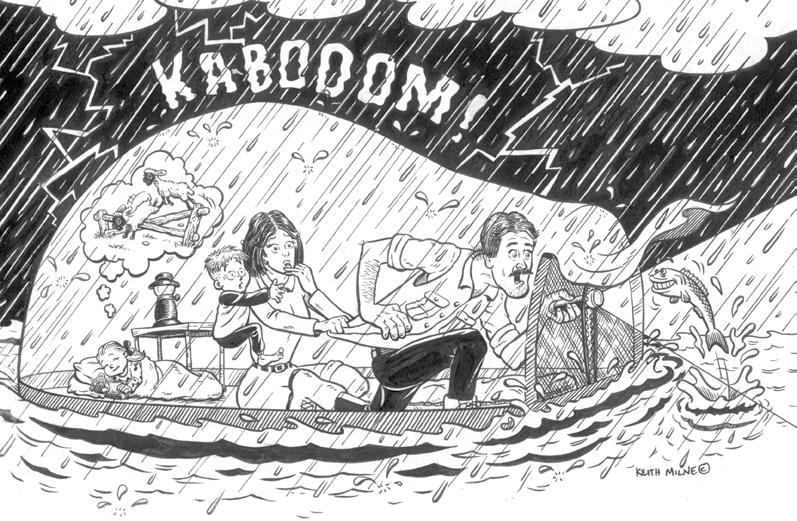
good storm from a distance, but we’re inside the belly of the beast. With each flash directly above, I taste ozone thick on my tongue and the hair on the back of my neck rises from the static.
This is the heller of storms. I can’t help but think of the 20 colossal white pines on our campsite that could crush a twostory house into kindling, let alone our quaking little shelter. The storm is too intense to head for the van parked nearby. I ponder for a moment if our life insurance is up to date, and I’m a bit surprised that I can’t remember who we asked to be godparents for our kids.
I run the flashlight beam across the tent’s seams and I’m relieved to see no leakage. With all our newfound interior acreage, it seems strange that we’re all bunched up in the middle. My son’s eyes are pie plates as the wind whines through the guy wires, and the taut nylon skin snaps like a flag on the Peace Tower. I feel badly for my wife, who could get uptight during a thunderstorm in a bank vault. This is light years beyond her tolerance level. I check out our three-year-old daughter who is sandwiched between her brother and parents. In the midst of this tumult, she is sound asleep. Her peaceful, almost-smile reminds me of Mona Lisa. Go figure.
The rain continues to pummel the tent and the mud and the picnic table and the van like an over-caffeinated drum corps. I feel thick, cold rivulets flowing beneath the plastic floor. Peeking out a slit in the front screen, I see the entire campsite is under water.
Before long, the intervals between lightning and thunder grow longer, and we know we’re out of the woods, figuratively speaking. We snuggle down into our sleeping bags, turn out the flashlights and gave each other a hug as the storm moves eastward.
We should be wet, hungry and miserable, but we’re not. I chuckle and listen to fat raindrops hitting the nylon as they tumble from the forest canopy. At last, my family emanates the little nose whistles of deep sleep. This really IS camping, I thought. We’ll do this again.
As I doze off, I really, really hope I remembered to close the van windows.
– Brant Scott is the editor of Ottawa Outdoors Magazine and a marketing communications consultant. Visit his web site at www.capitalideascommunications .ca or email him at brant.scott@sympatico.ca.























